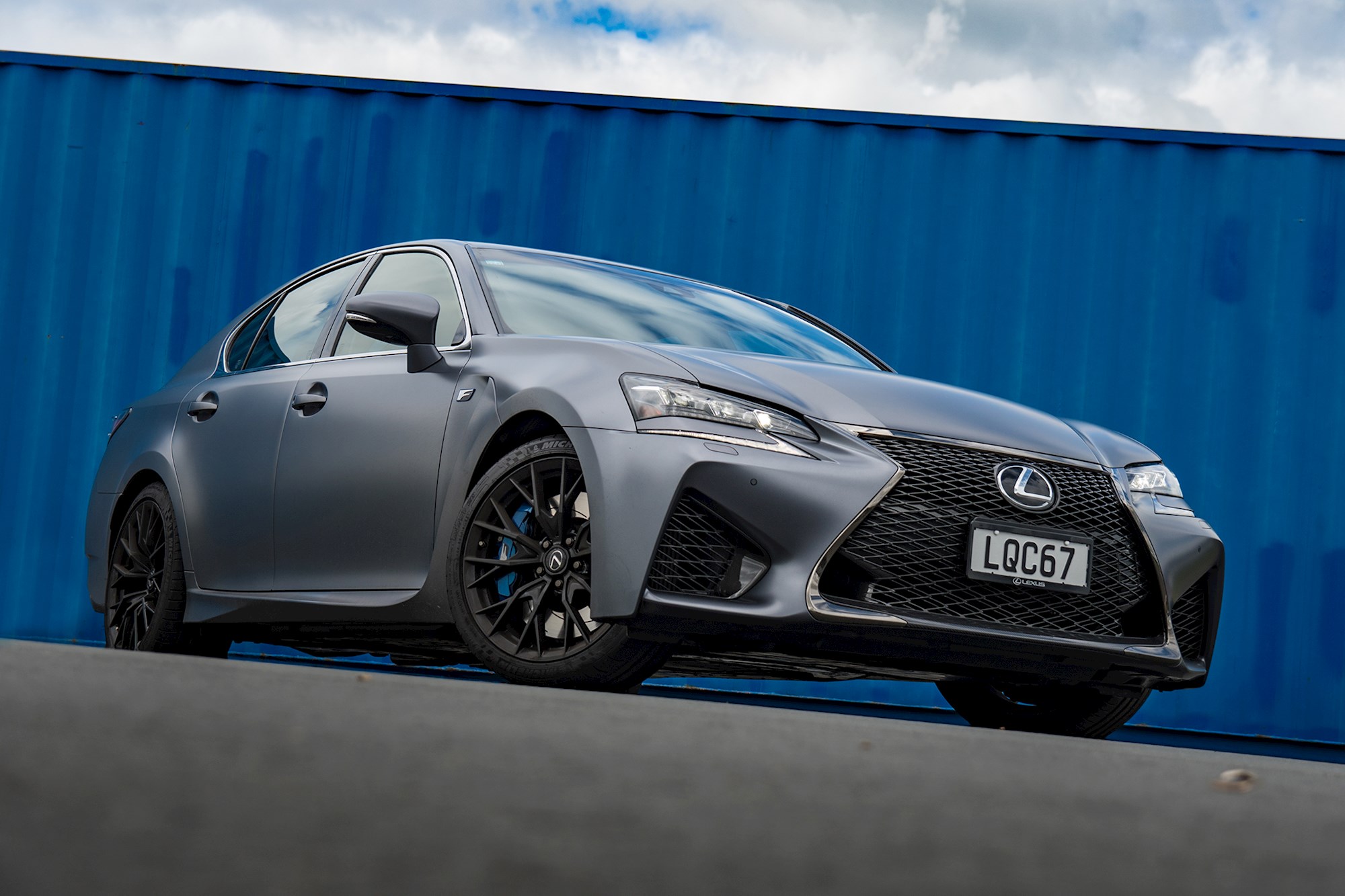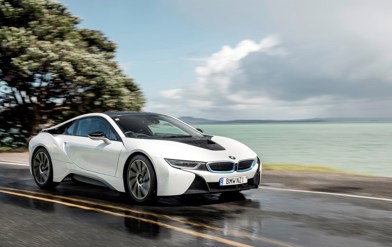The Lexus GS-F is probably the weirdest car I've driven all year.
Next to the manufacturer’s dictionary definition of sensibility and modernity, this is a raucous, screaming rear-driven V8 counterpoint. It binge-drinks fuel while hybrid stablemates merely sip, it’s less sculpted — less fussy to look at, and the interior is totally backwards.
It’s enough to force one to ask why to bother with it; and that’s before we get to all of the unique 10th Anniversary Edition trimmings on this new model.

The standard Lexus GS-F is a $169,900 offering, and is three-years-old in its current iteration. It’s the largest platform in the F-Performance line-up, with the likes of BMW’s M5 and Mercedes-AMG’s E63 appearing as theoretical rivals (both start at $199,990 apiece).
To celebrate the 10th anniversary of the F sub-brand, Lexus have released limited edition variants of the GS-F and RC-F coupe. Just 500 of each will be built, and only 10 of these GS-Fs are set to come to New Zealand.
Alterations are mainly cosmetic. The GS-F comes coated in Nebula Grey matte paint with gloss black wheels, and inside the seats, dashboard, and door cards come wrapped in blue leather, blue faux carbon fibre, and blue Alcantara.
An identification plaque on the centre console and $8500 added to the price tag are among the other changes.
Styling has long been a point of contention with Lexus models. The creased bodywork and hour-glass grills have a seemingly equal number of fans and foes. Some cars certainly wear the look better than others, and the GS-F probably isn’t one of them.

You’d think that draping its body in matte paint wouldn’t help matters. But it’s hard to deny that with matte paint it looks a little bit naughty; especially when it’s parked up at night, each panel drinking in the little available light.
And then there’s the cabin.

The fact that the offensive of blue looks like the scene of a Smurf genocide on first impression (it grows on you over time, I swear) is just the start of one of the quirkiest interior spaces in the segment.
Many of the buttons are backwards. The electronic handbrake, gear selector, and windscreen wiper stalk work in precisely the opposite direction to what you would expect. Hitting the wiper stalk one click downwards, for example, oddly sends the wipers straight to full blast.
The cruise control dongle is the same one you’ll find in a 20-year-old IS200, the hill-hold button is inconveniently placed right next to the start/stop button, and the ‘remote touch controller’ interface used to navigate the 12.3-inch infotainment system will still be near incomprehensible to anyone not from the smart-phone generation.

The material choices are equally strange. There are no less than six kinds of silver finish around the driver’s seat alone, for example. The BMW M5 I sampled a few months ago might’ve had six different cabin materials outright, tops.
It’s all very weird, but the longer you sit in the GS-F the more you learn to love its oddball intricacies. This is a car that looks and feels completely unlike any of its German rivals, with undeniably precise build quality, an exceptional 17-speaker Mark Levinson stereo, and some of the most comfortable bucket seats in any performance car.
It will never bore you.

Under the GS-F’s bonnet you won’t find forced induction or hybrid torque fillers. Instead, you get one big, unapologetic, naturally aspirated 5-litre V8.
Built with assistance from Yamaha, the 32-valve quad-cam 2UR-GSE can trace its lineage back to the very first Lexus F-Performance model; the 2007 IS-F. In this application, it develops 351kW at 7100rpm, and 530Nm at 4800–5600rpm. The 0–100km/h dash is done in 4.6 seconds, and top speed sits at around 270km/h.
In isolation, those numbers look fine. But when a new M5 packs 441kW, 750Nm, and a 3.4-second 0–100km/h time, it’s clear to see that the GS-F isn’t what you’d call a market leader in performance.

But, the thing about numbers on a spec sheet is that they’re unemotional. They barely scratch the surface of what cars like these are like to live with, to play with. And those wanting the more interactive and raw driving experience would be shooting themselves in the foot overlooking the GS-F.
Its steering and suspension tune is a superior fit for New Zealand’s tight and twisty B-roads. Hurl it into a corner, and you’ll marvel as the sticky Michelin rubber (255 up front, 275 down back) bolts you to the road with just enough slip at the limit to have a lot of fun without getting into too much trouble. A torque vectoring diff is one of the few new-age gimmicks on the GS-F, helping claw the 2.3-tonne behemoth around corners with enjoyable ease.
The double wishbone and multi-link suspension set-up might not have the bevy of settings that others in the class might, but it's nonetheless highly versatile. Flat cornering at pace is complemented by quiet comfort in typical commuting.

But over my week with the GS-F, it was the engine I fell in love with.
Naturally aspirated V8 engines are a dying breed these days, and cars like the GS-F serve as a reminder as to why that’s such a shame. At around 3500rpm it comes on cam, shouting with added aggression like a VTEC engine on steroids.
It needs none of the synthetic ‘fake noise’ tomfoolery that you’ll get in German rivals. Instead it sings to its 7500rpm redline with an incredible roar — at an pitch that sounds more like a more shrill 8500rpm.
A slow torque-converter eight-speed automatic transmission dampens the driving experience somewhat. It's markedly slower than a typical dual-clutch transmission on upshifts, and it struggles for accurate rev-matching on downshifts. Its shortcomings emphasise the need for the driver’s two hands and two feet to be on their game more of the time.

Character is a product of imperfection. As a long-time lover of the underdog, it's one of my favourite sayings. To define the world according to data alone is to skip over all of the things that make us all different, and in this case all the reasons why many of us fell in love with cars in the first place.
I’d sooner invite motorsport larrikin David Reynolds to my BBQ than 7-time champ Jamie Whincup. I’d rather take the mates to KFC than a five-star restaurant. And, right now, I would buy this weird, flawed, but incredibly pure GS-F over any other V8-powered sports sedan.
2018 Lexus GS-F 10th Anniversary Edition

Price: $178,400
Pros: Beautiful engine, versatile damping, crazy interior
Cons: Not that quick, colour combination not to all tastes, dim-witted transmission






























